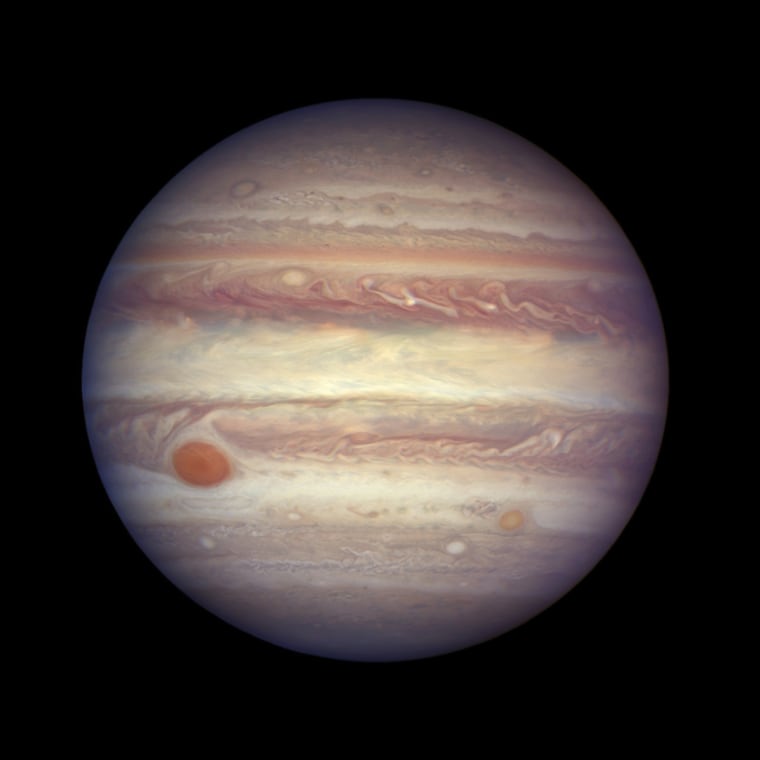It’s a busy time for Jupiter, the largest planet in our solar system.
On March 28, NASA released stunning new photos of Jupiter taken by Juno, the basketball court-sized space probe that’s been orbiting the gas giant since last July. And on April 7, Jupiter will make its closest approach to Earth this year, coming to within about 414 million miles of our home planet and appearing extraordinarily bright in the night sky.
Jupiter will rise in the East around sunset and will be visible all night, weather permitting.
No special equipment is needed to enjoy this Jovian close-up, a phenomenon astronomers call Jupiter “at opposition” because the planet and the sun are on opposite sides of Earth. But if you have binoculars, it should be possible to see the massive planet and also its four largest moons: Callisto, Europa, Ganymede, and Io. With even a basic telescope, you should be able to make out Jupiter’s Great Red Spot, a vast storm that’s roughly twice the size of Earth.
Related: Scientists are Seriously Excited About This Solar Eclipse
Observe Jupiter for a couple of nights in a row, and you may see the moons change their relative positions, as each orbits Jupiter at a different speed.
You certainly wouldn’t be the first person to make this eye-popping observation.
“This changing pattern of moons is what allowed Galileo to discover the four Gallilean moons, each about the size of our own moon, a little over 400 years ago,” Dr. Tyler Nordgren, an astronomer at the University of the Redlands in California, told NBC MACH in an email.
If you’re stuck indoors — or if clouds obscure the sky — you can enjoy a live stream featuring telescopic views of Jupiter and its moons in the video player below starting at 4:30 p.m. EDT on April 7.
Produced by the astronomy website slooh.com, the show will include expert commentary on Jupiter’s role in protecting the inner solar system from comets and on why Jupiter can be considered a “failed star.” Of course, there’s much more known about the fifth planet from the sun — and much we have yet to find out.
That’s where Juno comes in.
“Juno’s science goals are to learn about how Jupiter was formed, whether Jupiter has a core of heavy elements at its center, how much water is in Jupiter, and what the interior of Jupiter is like,” Dr. Scott Bolton, principal investigator of the Juno mission and an associate vice-president at Southwest Research Institute in San Antonio, Texas, told NBC MACH in an email. “This helps us understand how giant planets work and how our solar system was made.”
Juno will be collecting data at least through September 2021, Bolton said. If you miss Jupiter tomorrow night, your next chance to see it at opposition will come on May 8, 2018.

